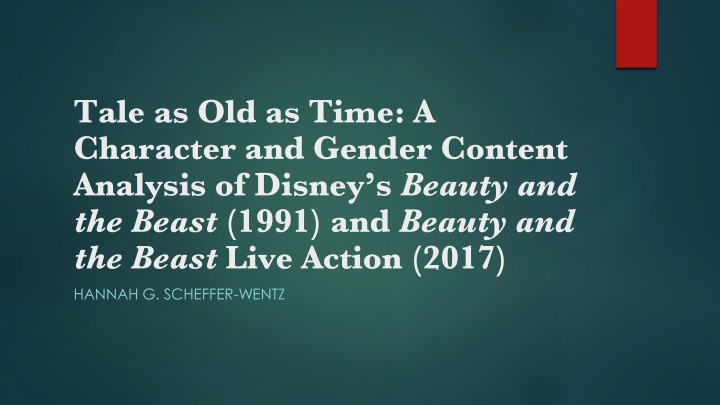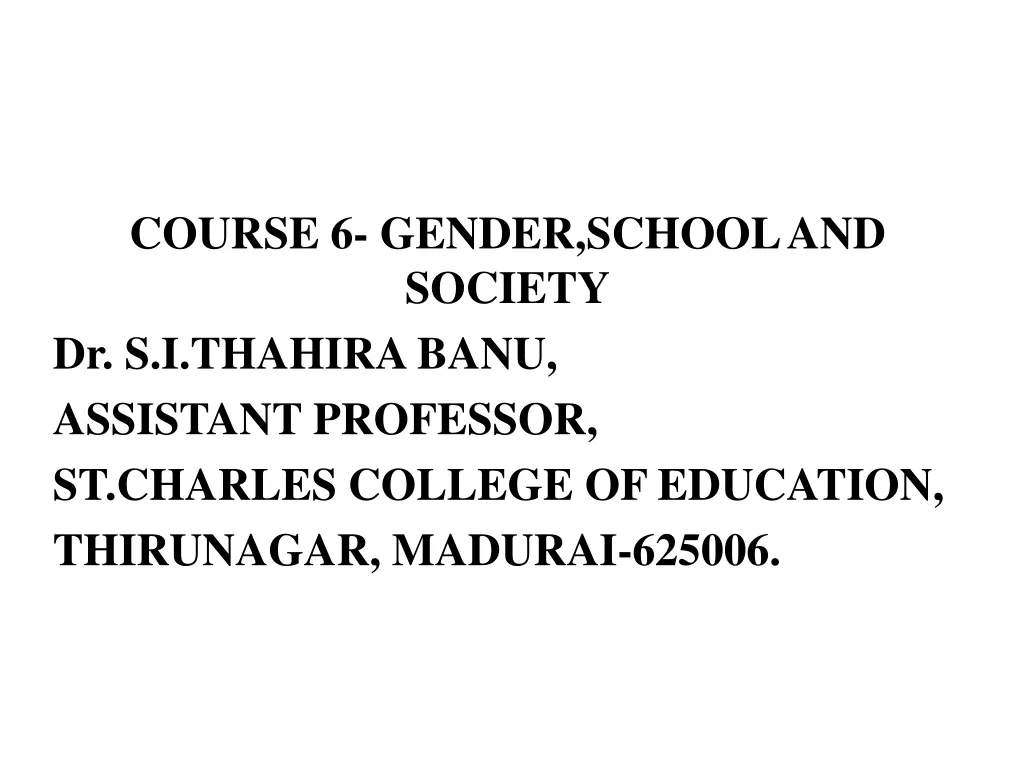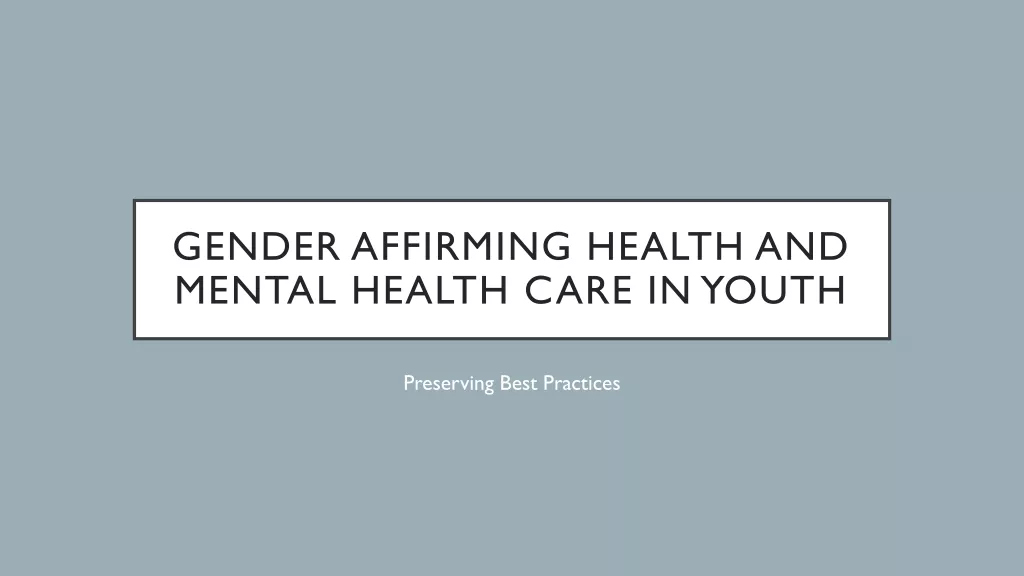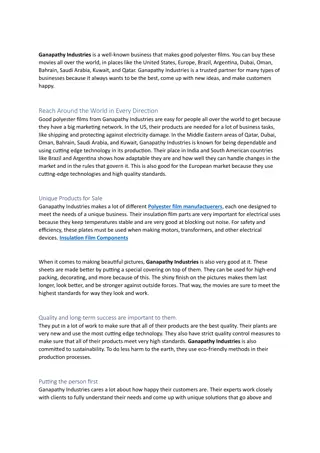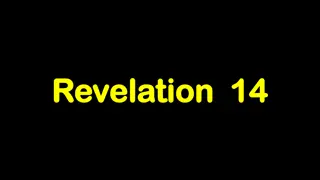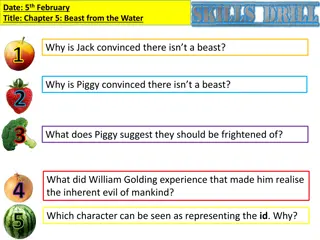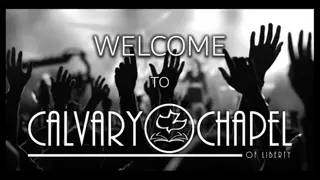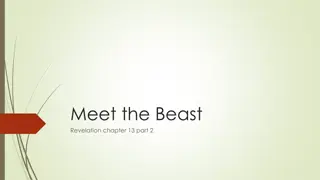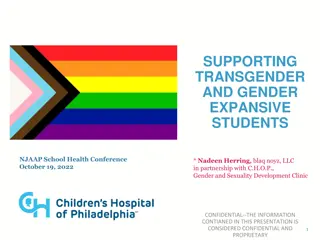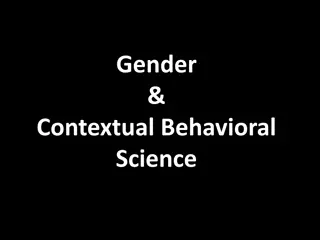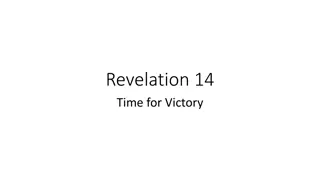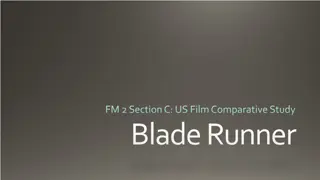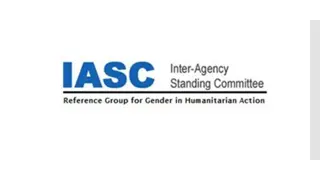Gender Analysis of Disney's Beauty and the Beast Films
Explore character and gender depictions of Belle and the Beast in Disney's Beauty and the Beast (1991) and the Live Action remake (2017) through a comprehensive content analysis. Discover similarities and differences in character traits, gender roles, and societal elements portrayed in both versions.
Download Presentation

Please find below an Image/Link to download the presentation.
The content on the website is provided AS IS for your information and personal use only. It may not be sold, licensed, or shared on other websites without obtaining consent from the author.If you encounter any issues during the download, it is possible that the publisher has removed the file from their server.
You are allowed to download the files provided on this website for personal or commercial use, subject to the condition that they are used lawfully. All files are the property of their respective owners.
The content on the website is provided AS IS for your information and personal use only. It may not be sold, licensed, or shared on other websites without obtaining consent from the author.
E N D
Presentation Transcript
Tale as Old as Time: A Character and Gender Content Analysis of Disney s Beauty and the Beast (1991) and Beauty and the Beast Live Action (2017) HANNAH G. SCHEFFER-WENTZ
This study aims to explore the prominent similarities and differences between Belle and the Beast in the 1991 classic animation and the 2017 Live Action remake through character and gender content analysis.
Disney Review of the Literature Live Action Comparative Analyses Beauty and the Beast Analyses
Research Question 1: What similarities and differences of character and gender depictions are presented by Belle in the 1991 and 2017 films? Research Questions Research Question 2: What similarities and differences of character and gender depictions are presented by the Beast in the 1991 and 2017 films?
Mixed Method Methodology Character Analysis Content Analysis
Character Analysis Role of Character Motivation Actions Character Traits Relationships Development Dialogue
Content Analysis 1991 Film 1991 Film 2017 Film 2017 Film Content Gender Analysis Data Belle Beast Belle Beast 54.55% 31.31% 37.01% 32.14% Traditional Female Traits % 45.45% 68.69% 62.99% 67.86% Traditional Male Traits %
Development of Belle Development of The Beast Societal Elements Discussion Single Coder Live Action Analysis
Intentional Changes Conclusion Societal Topics Balancing Audience Expectations
References Arnold, L., Seidl, M., & Deloney, A. (2015). Hegemony, gender stereotypes and Disney: A content analysis of Frozen and Snow White. Concordia Journal of Communication Research, 2(1), 1. Bateman, K. (2016). Why Emma Watson refused to wear a corset in beauty and the beast. Allure. Retrieved January 16, 2022, from https://www.allure.com/story/emma-watson- refused-to-wear-corset-beauty-and-the-beast Benhamou, E. (2014). From the Advent of Multiculturalism to the Elision of Race: The Representation of Race Relations in Disney Animated Features (1995-2009). Exchanges: The Interdisciplinary Research Journal, 2(1), 153 167. Blankestijn, L. M. (2015). From Snow White to Pitch Black: Gender and Racial Stereotyping of the Disney Princess. England, D. E., Descartes, L., & Collier-Meek, M. A. (2011). Gender role portrayal and the Disney princesses. Sex Roles, 64(7), 555 567. Houwers, L. (2017). The Representation of Gender in Disney s Cinderella and Beauty & the Beast: A Comparative Analysis of Animation and Live-Action Disney Film. Johnson, R. M. (2015). The evolution of Disney princesses and their effect on body image, gender roles, and the portrayal of love. Educational Specialist, 6. Kunze, P. C. (2021). Revise and resubmit: Beauty and the Beast (2017), live-action remakes, and the Disney Princess franchise. Feminist Media Studies, 1 16. Kusumajanti, W., Vristian, O. W., & Rusnalasari, Z. D. (2020). A Changing of Masculinity Hegemony of the Beast Character in Beauty and the Beast Stories. International Conference on English Language Teaching (ICONELT 2019), 66 71. Little, J. (2021). An Analysis of Disney Princesses and their Effect on Young Girls. Matyas, V. (2010). Tale as old as time: A textual analysis of race and gender in disney princess films. McChesney, R. W. (2000). The global media giants. Critical Studies in Media Commercialism, 59 70. Olson, K. M. (2013). An epideictic dimension of symbolic violence in Disney s Beauty and the Beast: Inter-generational lessons in romanticizing and tolerating intimate partner violence. Quarterly Journal of Speech, 99(4), 448 480. Paw\lowska, J. (2021). GENDER STEREOTYPES PRESENTED IN POPULAR CHILDREN S FAIRY TALES. Society Register, 5(2), 155 170.
References Scheffer-Wentz, H. G. (2020). Let it Go: A Critical Comparative Analysis of the Modern-Day Female Protagonist Based on Disney s Frozen and Frozen II [MA Thesis]. Purdue University Graduate School. Sculos, B. W. (2017). We Are The Beast: On Toxic Masculinity and Social Responsibility in Disney s Beauty and the Beast. Class, Race and Corporate Power, 5(2), 7. Sturgill, J. (2019). Beyond the Castle: An Analysis of the Strategic Implications of Disney+. Sultan Sr, R. (n.d.). THE CHANGING ATTITUDE TOWARDS THE EMPOWERMENT OF DISNEY PRINCESSES THROUGH THE AGES. LITERARY ENDEAVOUR, 146. Tan, X. F. (2020). A Study of Disney 3D Animation on Character Gesture and Expression. [PhD Thesis]. Tunku Abdul Rahman University College. Xu, M. (2021). Analysis on the Influence of Female Characters in Disney Films. 2021 5th International Seminar on Education, Management and Social Sciences (ISEMSS 2021). Chengdu. Zirger, S. L. (2020). Disney s New Fairytale: An Analysis of Representation in Disney s Live-Action Remakes of Beauty and the Beast and Aladdin [PhD Thesis]. University of Colorado Boulder.
